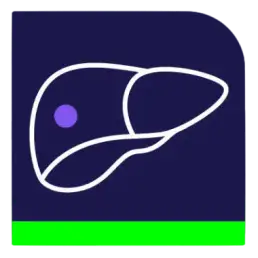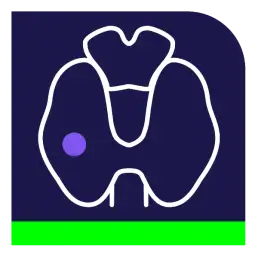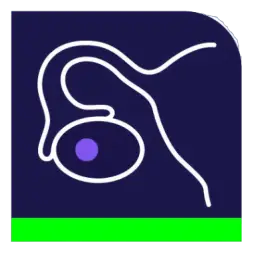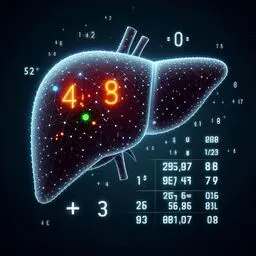LI-RADS Calculator 2024/2018/2017
Select the imaging modality:
LI-RADS ® guidelines implemented in this calculator:
Diagnosis
- LI-RADS ® CT/MRI v2018
- LI-RADS ® CEUS v2017
Surveillance
- LI-RADS ® Ultrasound Surveillance v2024
Treatment Response Assessment
- LI-RADS ® CT/MRI Nonradiation TRA v2024 + report generator
- LI-RADS ® CT/MRI Radiation TRA v2024 + report generator
- LI-RADS ® CEUS Nonradiation TRA v2024 + report generator
References:
- Chernyak V, Fowler KJ, Kamaya A, et al. Liver Imaging Reporting and Data System (LI-RADS) Version 2018: Imaging of Hepatocellular Carcinoma in At-Risk Patients. Radiology. 2018;289(3):816-830. doi:10.1148/radiol.2018181494
- Lyshchik A, Fetzer DT, Kono Y, Wilson SR, Dietrich CF, Clevert DA, Meloni MF, Jang HJ, Kim TK, Lee JM, Minami Y, Kudo M, Piscaglia F. Liver Imaging Reporting and Data System Contrast-Enhanced US Nonradiation Treatment Response Assessment Version 2024. Radiology. 2024 May;311(2):e232369. doi: 10.1148/radiol.232369. PMID: 38805727; PMCID: PMC11140523.
Related Calculators:

More about the LI-RADS calculator:
The Liver Imaging Reporting and Data System (LI-RADS ®) is a comprehensive system for standardized reporting and data collection in liver imaging. It aims to improve the consistency and clarity of liver imaging interpretations, specifically in the context of hepatocellular carcinoma (HCC) diagnosis and management. Although LI-RADS is a widely accepted framework, it is important to note that our LI-RADS calculator is not endorsed by the American College of Radiology (ACR).
Diagnosis
LI-RADS provides a structured approach to categorize liver findings in patients at risk for HCC. It ensures that imaging findings are reported in a consistent manner, facilitating clear communication among healthcare providers and aiding in the accurate diagnosis of HCC. The categories range from definitely benign to definitely HCC, with additional classifications for lesions that are probably malignant but not specific to HCC.
LIRADS CT/MRI v2018
The LI-RADS ® CT/MRI v2018 classification includes several categories designed to standardize the interpretation of CT and MRI liver studies. These categories help radiologists accurately classify liver lesions, leading to better clinical decision-making. The categories are:
- LR-1: Definitely benign
- LR-2: Probably benign
- LR-3: Intermediate probability for HCC
- LR-4: Probably HCC
- LR-5: Definitely HCC
- LR-M: Probably or definitely malignant but not HCC specific
- LR-TIV: Tumor in vein
LIRADS CEUS v2017
LI-RADS ® CEUS v2017 utilizes contrast-enhanced ultrasound (CEUS) for categorizing liver lesions. This modality is particularly useful in patients for whom MRI and CT are contraindicated. The CEUS categories are analogous to those used in CT/MRI, ensuring a consistent framework across different imaging modalities.
- CEUS LR-1: Definitely benign
- CEUS LR-2: Probably benign
- CEUS LR-3: Intermediate probability for HCC
- CEUS LR-4: Probably HCC
- CEUS LR-5: Definitely HCC
- CEUS LR-M: Probably or definitely malignant but not HCC specific
- CEUS LR-TIV: Tumor in vein
- CEUS LR-NC: Non-categorized
Surveillance
Surveillance for HCC is crucial in at-risk patients to enable early detection and intervention. LI-RADS ® guidelines specify the appropriate imaging techniques and intervals for surveillance, which are vital for monitoring the progression of liver disease and identifying early signs of HCC.
LI-RADS ® US was renamed to LI-RADS ® Surveillance US in February 2024.
LIRADS Ultrasound Surveillance v2024
LI-RADS ® Ultrasound Surveillance v2024 provides detailed criteria for using ultrasound in the ongoing surveillance of patients at risk for HCC. This includes guidance on the frequency of surveillance scans and the specific ultrasound features that should be monitored over time.
Treatment Response Assessment
Evaluating the response to treatment is a key component in the management of HCC. LI-RADS offers standardized criteria for assessing treatment response using various imaging techniques, ensuring that changes in the disease are accurately and consistently reported.
LI-RADS ®CT/MRI TRA (treatment response assessment) has been updated in April 2024.
LIRADS ® CT/MRI Nonradiation TRA v2024
LI-RADS ® CT/MRI Nonradiation Treatment Response Assessment (TRA) v2024 focuses on the evaluation of treatment response without the use of radiation-based imaging methods. This is particularly important for patients who require frequent monitoring and for whom radiation exposure should be minimized.
LIRADS ® CT/MRI Radiation TRA v2024
LI-RADS ® CT/MRI Radiation Treatment Response Assessment (TRA) v2024 provides guidelines for assessing treatment response using CT and MRI with radiation. These criteria help in determining the effectiveness of treatments and in making informed decisions about patient management.
LIRADS ® CEUS Nonradiation TRA v2024
LI-RADS ® CEUS Nonradiation Treatment Response Assessment (TRA) v2024 uses contrast-enhanced ultrasound to evaluate the response to treatment without exposing patients to radiation. This method is particularly beneficial for patients needing ongoing assessment while minimizing the risks associated with radiation exposure.
LI-RADS ® TRA for CEUS has been updated in May 2024.
We developed the LI-RADS calculator to facilitate incorporation of these recommendations into clinical practice.




Good tool!
Excellent!
Nice